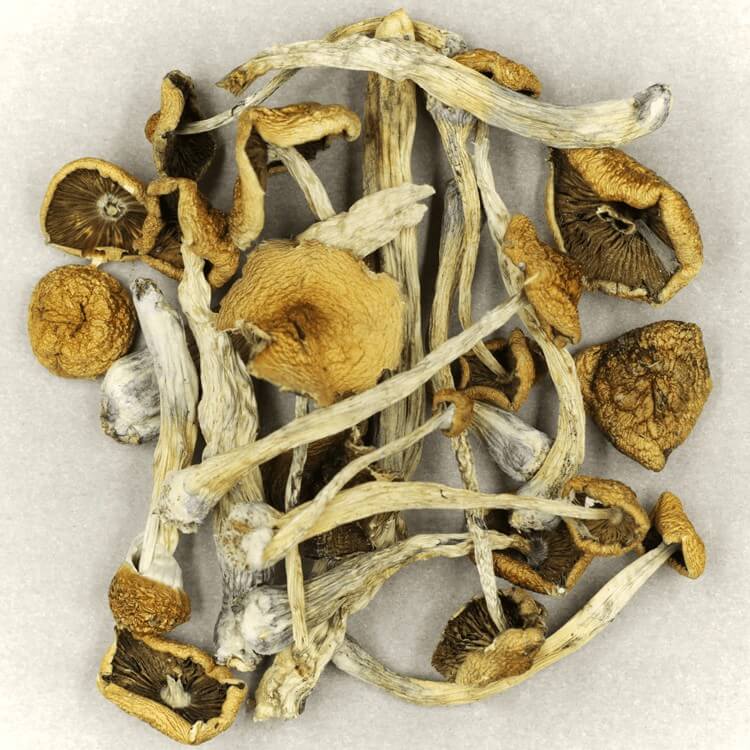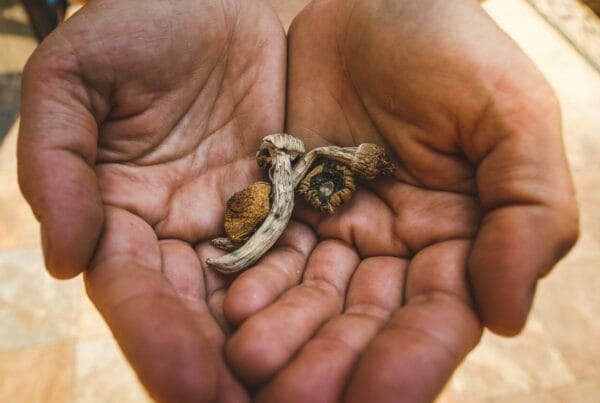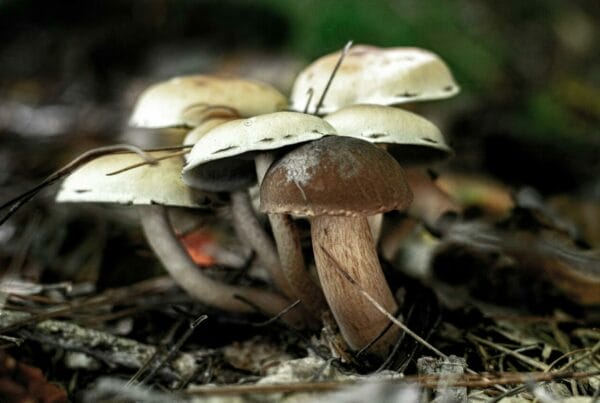The strength of Psilocybe mexicana was once deemed as mythical, but the narrative has drastically changed due to ongoing psilocybin research. The field of psychedelic research is consistently unveiling its therapeutic potential, leading to a gradual acceptance in the medical community. Experts see a promising future in this expanding field and are persistently working to determine safe dosage levels for medicinal purposes.
Key Takeaways
- Researchers are utilizing innovative methods such as liquid chromatography coupled with tandem mass spectrometry to measure the potency of mushrooms.
- Psilocybe Mexicana, along with other mushroom varieties, is being tested in clinical trials to evaluate its potential therapeutic applications.
- The genetic diversity in magic mushrooms is crucial for creating an accurate dosage guideline.
Psychedelic Mushrooms: From Unnoticed to Groundbreaking Research
In the past, only a few conditions were understood to benefit from Psilocybe Cubensis. However, psilocybin is currently making remarkable progress in revealing its hidden healing properties.
Researchers are harnessing the power of Psilocybe Mexicana and other potent strains for in-depth research and clinical trials. Regardless of whether the subjects are in vivo or in vitro, this strain has proven effective in demonstrating the true effects and advantages of the fungus species.
Psychedelics Penetrating the Market
What was once concealed is now unveiled—ongoing progress and discoveries are capturing the public’s attention, especially those seeking therapeutic solutions. Conventional treatments for mental health issues often prove inadequate, leading individuals to look for more dependable alternatives.
Welcome magic mushrooms.
Individuals with mental health disorders are turning to psilocybin, which has demonstrated potential in addressing depression, alcohol dependency, anxiety, compulsions, tics, chronic pain, and more.
Currently, medical professionals are exploring novel techniques to precisely determine the best dosage for safe patient administration. Notably, a research team from the University of Texas has devised a model to extract psilocybin and psilocin concentrations.
It’s feasible to clinically ascertain the potency of magic mushrooms.
Distinctive Traits of Mexicana
Golden Teachers, Blue Meanies, and B-Plus are among the magic mushroom species that have been deeply researched. However, to expand our knowledge on the safe use of magic mushrooms, it is crucial that we examine more species.
The Mexicana species is increasingly becoming a focus of research, not only due to its ancient roots, but also because its relatively mild potency has a greater potential to meet medical drug standards.
Despite the lower potency of this Mexican variant compared to other species, it can still elicit effects akin to more well-known strains. This makes it an optimal choice as the practice of microdosing gains popularity among patients.
It offers consistent levels of psilocybin and psilocin, much like other strains. So, what sets it apart from other similar strains? The answer lies in its historical and anthropological importance.
Delving into a Rich “Mexican” History
In ancient times, psilocybe mexicana grew naturally in moss. The indigenous populations held these psilocybin mushrooms in high regard, often associating them with mystical or otherworldly experiences.
Let’s focus on the Mexican mushrooms. More than 2000 years ago, North and Central American natives first documented using these mushrooms. The Aztecs, an ancient civilization, dubbed these mushrooms “food of the Gods,” or “teonanácatl” in their language.
If the Aztecs were present today, they would undoubtedly attest to the transformative, emotionally profound, and mentally balancing effects of the Mexicana, even without the understanding of these contemporary terms.
Despite different cultivation techniques, this mushroom has preserved its natural psilocybin concentrations, thus affirming its authenticity. This notable authenticity is held in high regard by researchers and institutions that conduct psychedelic research.
Innovative Techniques for Evaluating Psilocybin Content and Potency
A team of ten scientists from the University of Texas at Arlington, among other research institutions, have pioneered a new method for evaluating the potency of psychoactive compounds in mushrooms. This novel approach combines liquid chromatography and tandem mass spectrometry.
Here are two breakthrough techniques:
- Liquid chromatography refers to a technique that separates and identifies compounds in a chemical mixture. In the context of magic mushrooms, it’s applied to isolate active chemicals. The method consists of passing a liquid sample through a column packed with a solid substance, also known as the stationary phase. The various chemicals in the sample interact with the stationary and mobile phases in distinct ways, leading to their separation at different speeds as they travel through the column.
- Spectrometry is a field that examines the interplay between matter and electromagnetic radiation across a spectrum of wavelengths. It identifies and quantifies substances by the specific wavelengths of light that molecules absorb and reflect. This enables the determination of electronic, vibrational, and rotational states of a chemical entity.
This approach was employed on five strains of magic mushrooms. The investigation revealed that the average total levels of psilocybin and psilocin in these strains ranged between 0.879 and 1.36. These concentrations exceeded those found in many other strains, such as Bull Run and Cambodian. To confirm the accuracy of their findings, the researchers cross-checked their results with data from other independent labs.
The concurrence of results from both labs further reinforced the reliability of their testing procedure to accurately gauge the potency of the mushrooms.
If validated by subject matter experts, this could pave the way for innovative techniques to supplement existing psychedelic potency testing methods, adding a further layer of safety to prevent unsafe dosage calculations.
Extending Research to Additional Species
Further research involving other species has potential benefits. It could deepen our comprehension of the health advantages linked to different mushroom strains and furnish foundational data on the impacts of less potent mushrooms.
Moreover, it could assist in enlightening individuals about the effects of diverse dosages on the psychedelic experience. By contrasting the Mexican strain with more potent ones like Psilocybe Cubensis, researchers can ascertain how different levels of active compounds might influence therapeutic results.
For example, the Blue Meanies strain is known for its stronger hallucinogenic effects, which could potentially be effective in treating ailments such as depression. On the other hand, strains with lower potency are more suitable for microdosing or more subtle uses like mood enhancement or improving focus.
Diversity in Genetics Enhances Safety of Treatments
Unbeknownst to many, different mushroom cultivars or varieties carry unique genetic profiles and
Understanding the variety in strength, chemical composition, and impacts of different hallucinogenic mushrooms allows healthcare professionals to select the most fitting variant for specific medical purposes. They can then adjust the dosage to meet individual requirements, thereby reducing risks and maximizing benefits.
Take, for instance, Psilocybe Semilanceata (Liberty Caps) or Psilocybe cyanescens. These mushrooms have distinctive alkaloid profiles that could prove beneficial in managing anxiety. On the other hand, certain synthetically grown mushrooms could be more apt for addressing substance addiction or compulsions. This assortment aids in devising personalized treatments with heightened safety and efficiency.
It can be inferred that the genetic diversity in hallucinogenic mushrooms, combined with innovative techniques for strength assessment and identification, is vital for creating safer medical treatments.
Enhanced Safety in Medical Applications
Let’s reflect on the implications of safer dosage practices.
- Decreased overdosing occurrences: Accurate dosage means users don’t have to fear overdosing. This also suggests that product labels need to be more comprehensible to avoid consumer misunderstanding.
- Increased predictability: With more accurate dosing, individuals can anticipate the experiences they might encounter during their trips. This can reduce overwhelming sensations and anxiety, thereby increasing patient satisfaction.
- Uniform measurement: Dosing precision can pave the way for a standardized measurement system, allowing people to easily refer to charts for potential effects.
Experience the Benefits of Accurately-dosed Shrooms with Advanced Potency Tests | Buy Magic Mushrooms Online at Magic Mushrooms Quebec Canada
If these two cutting-edge techniques continue, you won’t have to deal with unforeseen effects. Couple this with smart online shopping at Magic Mushrooms Quebec Canada. We offer dried mushrooms that provide a tranquil, soothing psychedelic journey without intense psychoactivity. Buy psychedelics online in Canada through Magic Mushrooms Quebec Canada.
Frequently Asked Questions
Are Big Mexicans and Psilocybe Cubensis the same?
No, Big Mexicans and Psilocybe Cubensis are distinct strains of mushrooms, so it’s crucial not to confuse them. Big Mexicans have a higher compound isolation, ranging from 0.5% to 1%, which makes them considerably more potent
The appearance of these two types of mushrooms also varies: Psilocybe Mexicana often boasts a bell-shaped cap, in contrast to the conical cap commonly found on Psilocybe Cubensis.
What concentration of psilocybin and psilocin can Mexican mushrooms reach?
The concentration of psilocybin and psilocin in Mexican mushrooms can peak at 0.25%. While these levels are relatively low and comparable to those found in the Golden Teacher strain, they can still induce powerful psychedelic experiences, which may have potential health benefits.
What is a safe medical dosage?
Typically, a dosage ranging from 1 to 2 grams is recommended. However, this can vary depending on factors such as the method of consumption, an individual’s metabolism, and the specific potency of the mushroom strain. To mitigate the hallucinogenic effects, some individuals opt to take sub-threshold doses ranging from 0.05 (50mg) to 0.025 grams (250mg).





